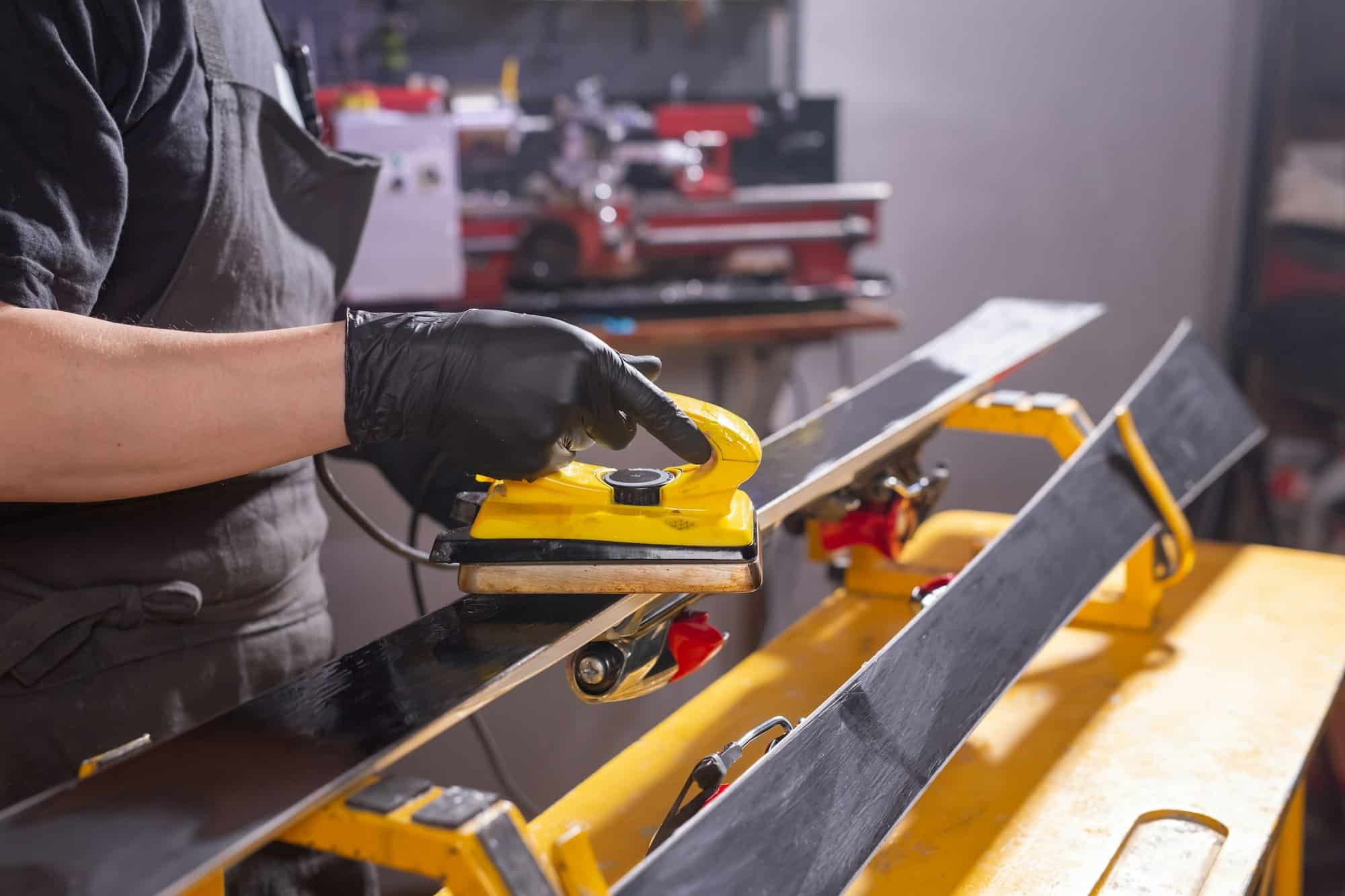The journey from the dawn of skiing as a necessary means of transportation in snowy landscapes to its current status as an adrenaline-fueled sport has been a fascinating evolution. With this evolution, the equipment used in skiing has seen radical shifts and improvements over time. Perhaps one of the crucial yet underappreciated aspects of ski equipment is ski wax. Ski wax is a material applied to the base of skis to help improve glide and control on the snow. It’s a crucial component in the sport that has witnessed significant advancements in recent years.
The Evolution of Ski Wax
Through the ages, skiers have tested and applied various substances on their skis to improve glide and control. In the realms of cross-country and alpine skiing, wax has become an essential piece of the puzzle. The type of wax applied to your skis can significantly impact your performance on the pistes.
Topic to read : How to Develop Strategic Thinking in Chess Players Who Are Also Competitive Athletes?
For a long time, conventional wisdom steered skiers towards paraffin-based waxes. However, these conventional waxes have their set of problems. They are not particularly durable and need constant reapplication. Moreover, they also pose environmental issues due to their non-biodegradable nature.
The sport of skiing has seen a shift towards eco-friendly alternatives in recent years, driven by growing environmental consciousness and scientific advancements. The market has seen the introduction of plant-based and biodegradable waxes that are kinder to the environment while offering competitive performance.
Also read : What’s the Best Approach to Altitude Acclimatization for High-Altitude Ultramarathoners?
The Role of Ski Wax in Performance
The primary purpose of using ski wax is to reduce friction between the base of the skis and the snow. The reduction in friction enables skiers to glide effortlessly across the snow, thereby improving overall performance.
According to a study published in PubMed and cross-referenced in Crossref, ski wax tweaks the microproperties of the ski base to interact with the snow in a specific manner. This interaction is crucial in determining the ski’s friction coefficient, which directly influences the ski’s glide ability.
Research led by scholar Johan Holmberg further indicates that ski wax also affects the water layer’s formation between the ski base and the snow. This water layer plays a crucial role in determining the ski’s grip and glide on the snow.
The Latest Advancements in Ski Wax
The advancements in ski wax technology have changed the game for skiers. The focus is not only on performance enhancement but also on ensuring environmental sustainability. The latest ski waxes in the market aim to balance these two crucial aspects.
One of the most notable advancements in ski wax technology has been the introduction of fluorinated waxes. These waxes contain fluorocarbon compounds that repel water and reduce friction significantly. However, due to their environmental impact, fluorinated waxes have seen a ban in many countries.
So, the focus has shifted towards creating high-performance, environmentally friendly ski waxes. Some of the innovative solutions in the market include plant-based, biodegradable waxes and alternative glide enhancers. These advancements are not only beneficial to the environment but also offer better durability than traditional ski waxes.
The Future of Ski Wax
Looking ahead, the future of ski wax seems to be leaning towards more sustainable and high-performance alternatives. With increased environmental awareness, the demand for eco-friendly ski waxes is on the rise. The market is responding to this demand with a range of innovative solutions.
Moreover, research in the field of nanotechnology is opening new avenues for ski wax development. These advancements promise to deliver tailor-made solutions for different snow conditions, offering optimal performance for skiers.
While the future of ski wax looks promising, it will require continuous effort from researchers, manufacturers, and the skiing community to balance performance needs with environmental concerns. As the ski season approaches, it’s clear that both professional and amateur skiers stand to benefit from these advancements in ski wax technology.
Technological Advancements Influencing the Ski Wax Market
The global ski wax market is currently going through a period of significant change due to the introduction of new technologies and the shift towards eco-friendly products. The market growth can be attributed to the rising demand for advanced ski waxes that not only enhance skiing performance but also align with the increasing environmental consciousness.
According to Google Scholar, one of the most promising technologies influencing the ski wax market is nanotechnology. It has the potential to revolutionize the way ski waxes interact with skis and snow. This technology can be used to manipulate the micro-properties of ski wax at a molecular level. Consequently, it can create a more effective layer of wax that interacts optimally with various snow conditions.
Notably, nanotechnology can tailor the friction properties of ski wax, making it adaptable to different snow conditions. This could lead to a scenario where skiers can use specific waxes for specific snow conditions, thereby significantly improving their performance.
However, the application of nanotechnology in ski wax also raises some environmental concerns. The potential environmental impact of nanoparticles is still largely unknown, and more research is needed. This underscores the need for a careful balance between leveraging technological advancements for performance enhancement and ensuring environmental sustainability.
Another noteworthy advancement influencing the ski wax market is the development of alternative glide enhancers. As the name implies, these products are designed to enhance the glide ability of skis. Unlike traditional ski waxes, these products do not need to be applied to the entire ski base. Instead, they can be applied to specific areas of the ski that come into contact with the snow. This not only offers efficiency but also reduces the amount of product used, leading to less environmental impact.
Conclusion: Striking the Right Balance
When it comes to ski wax, it’s clear that the narrative is shifting from, "What gives the best performance?" to "What gives the best performance in the most sustainable way?". The ski wax market is evolving to meet the demands of both professional and amateur skiers, who are increasingly looking for products that combine performance and sustainability.
The advancements we are seeing—including alternative glide enhancers, biodegradable waxes, and the potential application of nanotechnology—signal a promising future for the ski wax industry. However, it’s important to remember that the journey towards this future is not going to be a straightforward one. It will require ongoing efforts from researchers, manufacturers, and the skiing community to realize this vision.
The task at hand is to keep pushing the boundaries of what ski wax can do, without losing sight of the importance of safeguarding our environment. With the ski season just around the corner, one thing is certain: The future of ski wax is a topic that will continue to generate much interest and excitement in the world of alpine and cross-country skiing. And as we move forward, it will be fascinating to see how these advancements will redefine not just the ski wax market, but the sport of skiing itself.
















